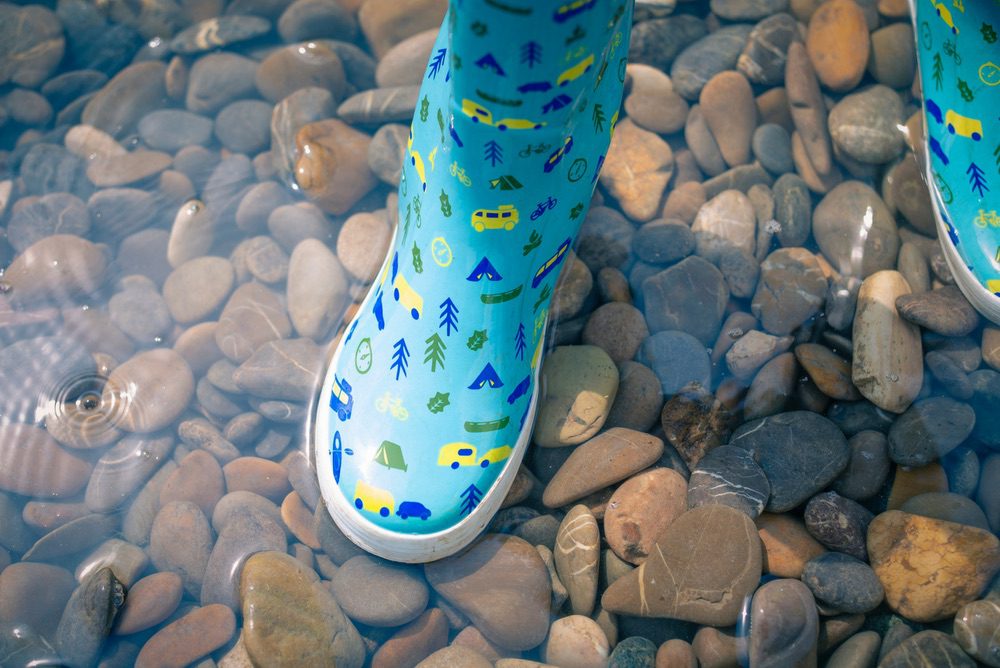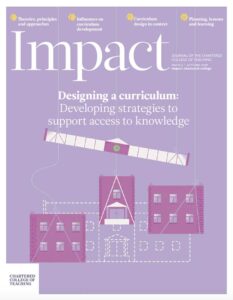Geography at the heart of the primary curriculum

In the primary curriculum, geography is referred to, unsurprisingly, as the ‘umbrella’ subject because of its capacity to make tangible and effective connections across subjects. Geography’s fundamental role lies in helping children to understand the world, its environments and places near and far, and the processes that create and affect them. It encourages a holistic appreciation of how the world works and of the interconnections between concepts such as scale, community, cultural diversity, interdependence and sustainability. Geography is a subject that contextualises and extends the possibilities for developing and applying language and mathematics, and enriches understanding of, and in, subjects from science and history to art and design.
As a required curriculum subject, it is important that geography is not only given appropriate time, equivalent to at least its hour a week, but is also identified clearly and taught effectively. This article outlines important aspects of the subject and advocates teachers’ agency in shaping their geography curriculum.
Primary geography with context
High-quality geography boasts an impressive pedagogical repertoire, which is illustrated below by reference to its aspects of geographical enquiry, outdoor learning and fieldwork, children’s personal geographies, spatial awareness, mapwork and graphicacy, learning technologies and environmental geography. These should be used to deepen children’s understanding of challenging and, at times, controversial realities, events and concepts.
The enquiry approach to learning is one of geography’s strongest assets (Pike, 2016). Conducting geographical enquiries develops proficiency in asking relevant questions, collecting and analysing data, and drawing conclusions. Children aged four and five can make simple tally charts about features passed on their journey to school and consider what this information tells them, while 10–11-year-olds can interrogate sophisticated data by comparing weather and climate charts to explain local seasonal variations. Geographical enquiry is thoughtful and creative, enabling children of all ages to engage in constructive and imaginative ways to learn (Scoffham, 2017).
Enquiry is often facilitated and exemplified through outdoor learning, by employing fieldwork skills. Geography provides transformative opportunities for learning in the environment as well as from it, about it and for it (Pickering, 2017). For example, investigating problems affecting traffic and parking or the accessibility for everyone of public transport and to shops and services is best undertaken through well-planned fieldwork in the local area and, if possible, through a visit to another locality. Fieldwork contributes to learning about the outdoor environment, through children developing their knowledge and understanding in the environment and their sense of responsibility and a desire to care for – even improve – what is around them.
Children’s personal geographies – individual to each child – can be compared, contrasted and brought together through collaboration to provide insight into the nature, variety and lives of the neighbourhoods and communities in a school’s catchment area and beyond (Blundell, 2016) (Malone, 2018) (Nairn and Kraftl, 2016). This involves the consideration of resolutions for potential issues (linking with social, moral, spiritual and cultural (SMSC) education), and encourages articulation and expression through writing, debating and persuasion. Scientific and mathematical investigations contribute to understanding the physical environment when investigating the location and distribution of local flora in local stream, river or coastal studies, and in mapping patterns of housing and services. Learning that interconnects subjects gives greater meaning and significance to enquiries and, in presenting findings, subjects such as art and design are engaged through modelling, map-making and informative displays. Children can apply and adapt their developing subject understanding and skills to propose ideas and solutions to topics as diverse as conflicting proposals for local improvements, the need to provide additional energy sources nationally, and ways in which international fair trade may develop communities across the world. Through heir geographical studies, children develop autonomy and empowerment, applicable across their lives (Catling and Willy, 2018).
An important aspect of the primary geography curriculum is the development of children’s spatial awareness in and about the environment. Studying locations, places and environments develops children’s sense of place and space in the world at a range of scales. Studies of human and natural features and phenomena develop children’s spatial awareness. They may examine the location and distribution of features, whether of local postboxes or of volcanoes globally, to notice and map their patterns, leading them to consider the reasons for and impacts of these and to ask further questions to investigate. Spatial learning is enhanced, for instance, through considering where other players are around them in a team sport such as netball or football. Children can observe where they and others are in a class or playground and look at how best to navigate their way around, considering the routes they might use, what obstacles may require detours and how they might describe the geography of these familiar places.
Maps are the ‘tool’ of the geographer – the medium through which geography is recorded, analysed and communicated. Developing the skills of decoding, interpreting, comprehending and analysing information and messages from maps is invaluable, not simply to understand where you are and find your way but to recognise the features and aspects of an urban, rural or wild area (Wiegand, 2016). Historical contexts can provide opportunities for good geography. Studying maps alongside descriptive texts and pictures about a battle involves recognising and appreciating the relief and state of the landscape where it was fought, how the armies were aligned on the battlefield and how they made use of the terrain for attack and defence. This is as important as understanding the politics of the time. Reading maps is one of the skills of graphicacy, which is about interpreting visual images such as pictures, graphs, sketches, charts, photographs and diagrams. It stands alongside oracy, literacy and numeracy (Boardman, 1983). Graphicacy skills enable children to demonstrate their understanding through non-text media, a vital skill that appeals to children in an increasingly visual age. Harnessing such skills alongside using maps helps children to understand what is happening in an area, tying together the past, the present and what may occur in the future.
Geography is well served by accessible graphic learning technologies. Google maps, OS maps and geographic information systems (GIS) motivate and enable children to delve into and enhance their understanding of places and environments, helping to develop their geographical awareness and articulate their geographical learning. Websites such as Google My Maps can enrich children’s understanding of the world around them at all scales, engaging and encouraging their curiosity. Vujakovic (Vujakovic, 2016) explains how sites like Meaningful Maps enable children to articulate their sense of local place and understand their social and personal history through creating maps. Similarly, the use of green screens and virtual reality (VR) with simple Google Cardboard headsets opens the world to children and gives them a sense of places they may never visit but of which they can become aware and begin to appreciate. Lawrie (Lawrie, 2017) shows how such technology may be used with secondary children, and many of these examples can be adapted for primary schools.
Environmental geography fulfils children’s desire to know more about their physical and human world and the interplay of those two for environmental management and sustainability. Children can begin to understand the potential of their role and the impact that they might have through their actions and interests, as primary geography takes them beyond their immediate world and what they currently know to deepen their environmental knowledge and nurture their stewardship of places (Nolet, 2016).
A pertinent topical illustration is our use and disposal of plastics. This can be the focus for an engaging geography-led enquiry, employing collaborative skills and fostering positive values. Plastics are invaluable in our modern lives, yet carelessness with them creates potential harm. Children could investigate what plastic is and why it is so widely used. In science, they can study materials as they examine the uses and distribution of plastic items and wrappings. Using maps, photographs and videos, children can build an understanding of plastic manufacture, its sources, its global distribution, the problem of its perceived ‘throwaway’ nature and its impact on natural and urban environments. Importantly, children can start to consider possible solutions, from reuse and safe recycling to ways in which they and their families can reduce their use of plastics, as well as looking into how they might replace it. Working together to share their findings, using oracy, literacy, numeracy and graphicacy skills, children can be encouraged to make creative and insightful proposals and decisions, connecting their studies with SMSC and citizenship, to explore how they may make a difference.
Primary geography curriculum making
To help children to understand their ‘powerful’ geographical knowledge – powerful because it helps to empower their lives (Catling and Martin, 2011) (Young et al., 2014) – we, their teachers, need to recognise and appreciate that we are incorporating and teaching geography in topics and to ensure that the children know that they are doing geography (Scoffham and Owens, 2017). Children can then meaningfully develop and deepen their understanding and application of geographical knowledge and skills. This is liberating for us as teachers and for children, and is the basis for good primary geography ‘curriculum making’ – creating geographical studies that have meaning and value for children.
Geography curriculum making is premised on teachers and children having agency in developing their geographical studies within subject or cross-curricular topics (Catling, 2013) (Catling and Willy, 2018). Teachers who are good at creating their geography curriculum use a wide variety of the subject’s pedagogical repertoire. They listen to and are actively engaged as a ‘critical friend’ to children’s perspectives and ideas, valuing and engaging with children’s personal geographies. They provide an informed sense of direction in and for children’s graphical studies, as the person with clarity about where their geographical learning needs to go – teachers hold the curriculum ‘map’ for their learning, provide the overview of its landscape, and discern and help their children select effective routes to realise their potential.
To be effective curriculum makers – providing rich, broad and balanced learning for children and opportunities for them to apply and adapt their learning for other subjects – we must be clear about just what geography is and why it is important to learn. Through active engagement in primary geography, children are enabled to learn not only about the world but also how it works, how it fits together and how to make a difference and become positive contributors to it.










